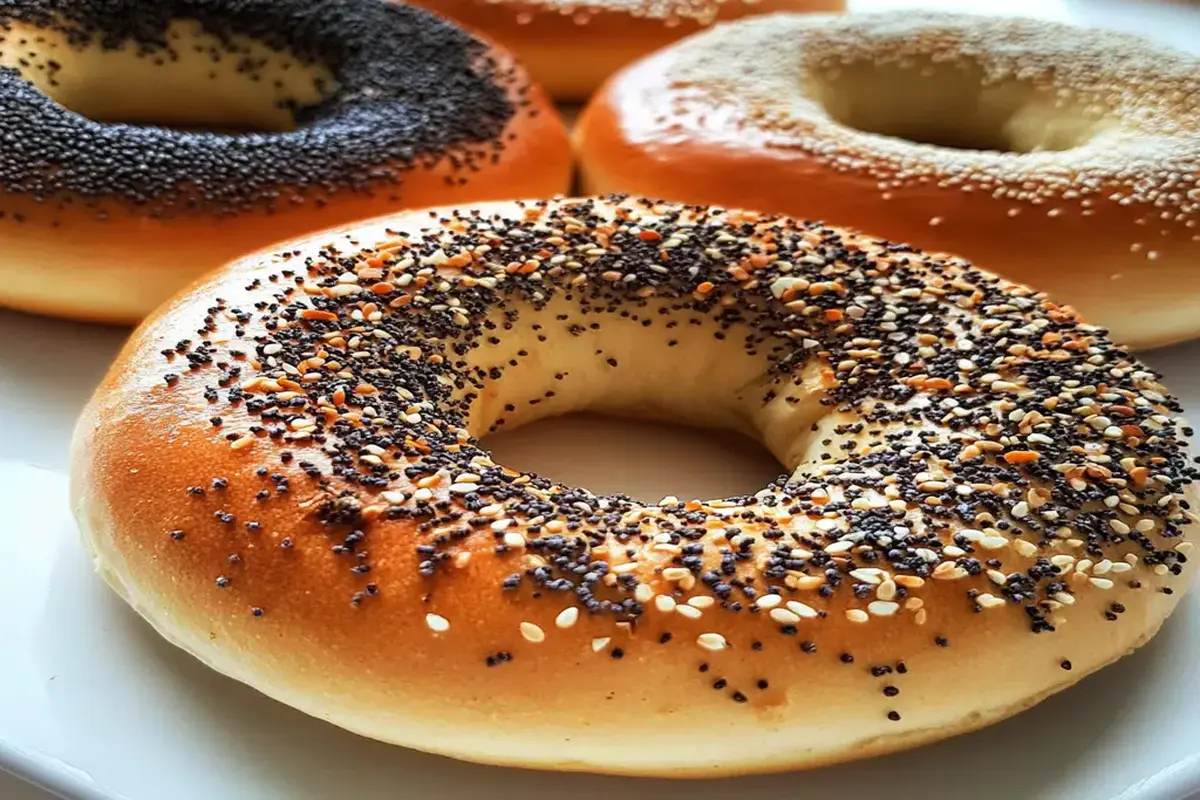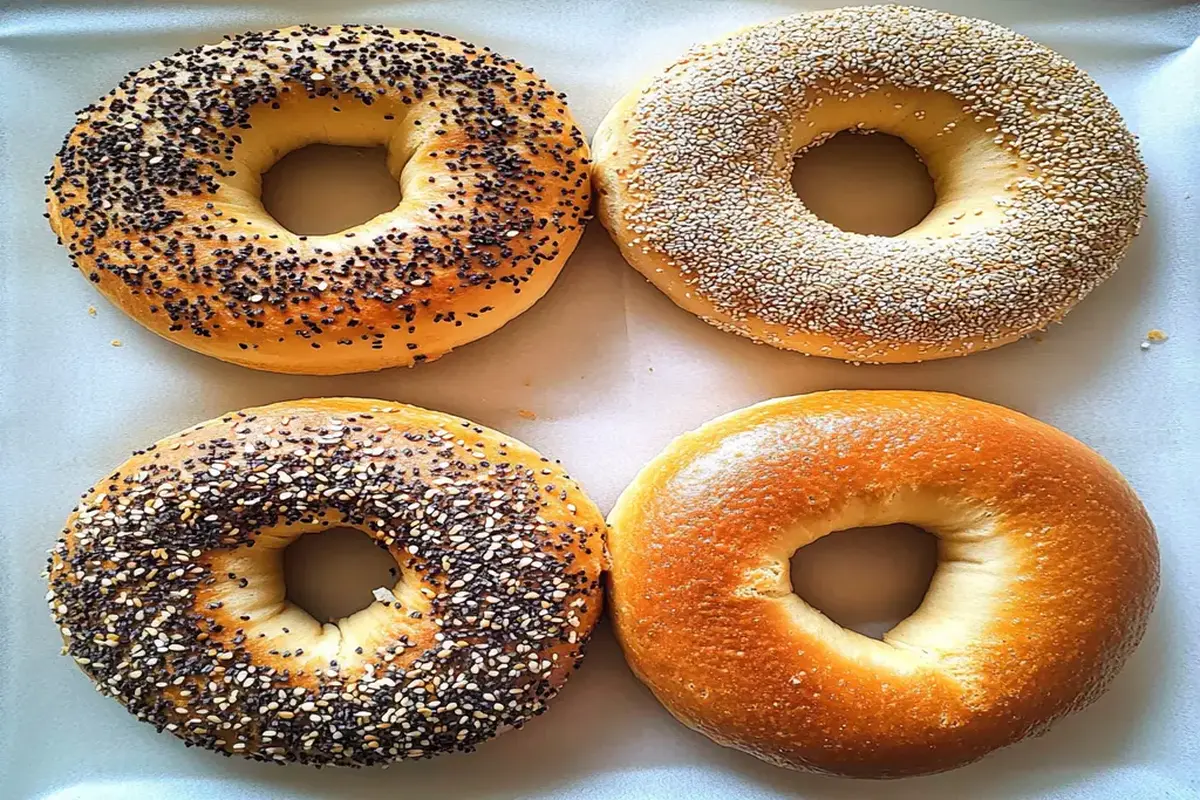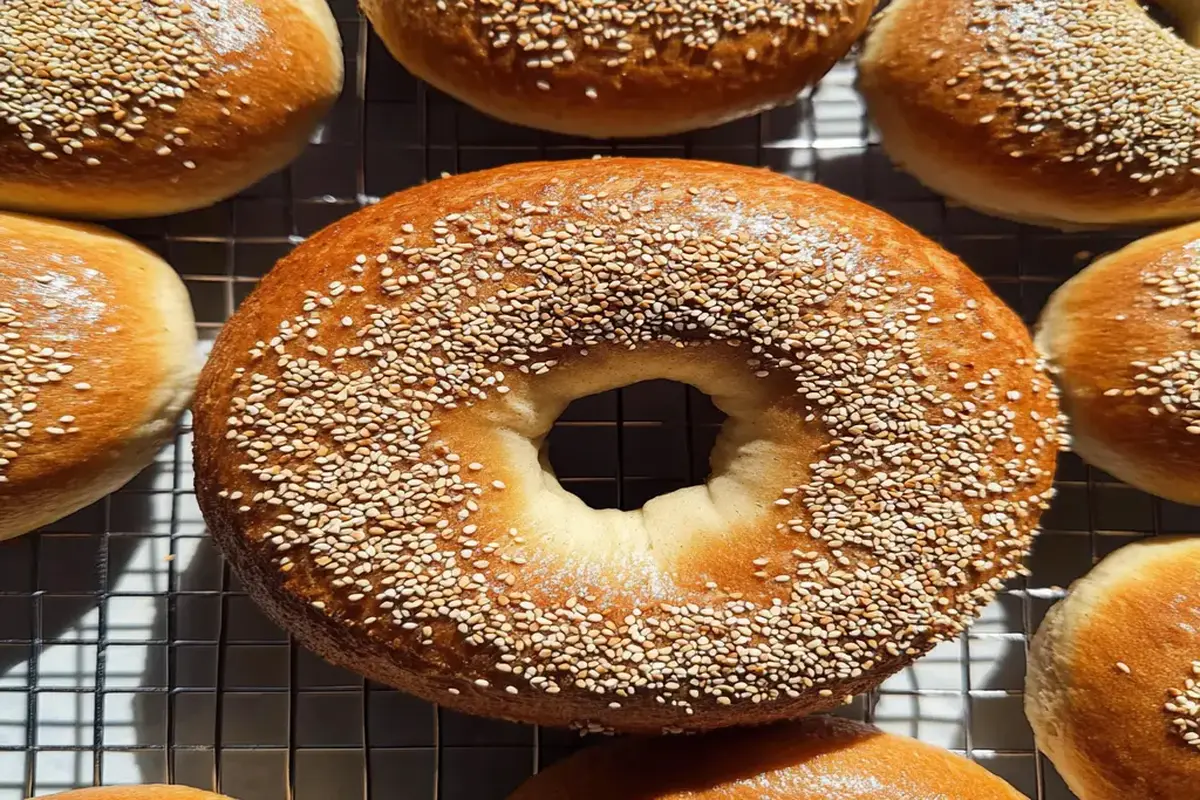Bagels: small, round, chewy wonders that have captivated breakfast and snack lovers worldwide. But what makes a bagel truly exceptional? Why do some bagels leave you dreaming about them while others are just “meh”? This guide dives deep into the art of crafting, enjoying, and finding a better bagel. So grab a cup of coffee, and let’s explore!
What Makes a Better Bagel?
The Origins of the Bagel: A Brief History
Ever wondered where bagels came from? The bagel’s journey starts in 17th-century Poland, where Jewish bakers created this boiled-and-baked bread as an affordable, satisfying snack. Its unique shape—round with a hole in the middle—made it easy to store and carry, perfect for a community always on the go.
Fast forward to today, and the bagel has transcended its humble beginnings, becoming a global phenomenon. But with fame comes variations, and not all bagels are created equal.

- Texture: The perfect bagel boasts a chewy interior and a slightly crisp, golden crust. It’s not too soft like bread, nor too hard like a pretzel.
- Flavor: A better bagel isn’t bland. Whether plain, sesame, or everything, it delivers a balanced taste that complements toppings and spreads without overpowering them.
- Freshness: Freshly baked bagels always win. Stale, store-bought bagels? Not so much.
If your bagel doesn’t meet these standards, it’s time to rethink your bagel choices—or better yet, make your own.
Ingredients for Crafting the Best Bagel
Flour Choices: The Foundation of Great Bagels
Every bagel starts with the right flour. High-protein bread flour is key here because it gives bagels their signature chewy texture. Unlike all-purpose flour, bread flour contains more gluten, making it ideal for creating that stretchy dough we all love.
Pro Tip: Don’t skimp on quality. Premium flour can make or break your bagel game!
The Role of Yeast, Water, and Salt in Bagel Dough
These three ingredients are the unsung heroes of any bagel recipe:
- Yeast helps the dough rise, giving it volume and a light structure.
- Water binds everything together. Fun fact: in NYC, the water is said to contribute to the city’s legendary bagels!
- Salt balances the flavors and tightens the gluten, ensuring a firm dough that can hold its shape.
Secret Additives for Enhanced Flavor and Texture
Want to elevate your bagel game? Try adding these to your recipe:
- Malt Syrup or Honey: For that subtle sweetness and shiny crust.
- Eggs: While not traditional, they create a richer, softer bagel.
- Seeds or Herbs: Mix-ins like poppy seeds or rosemary can add a unique twist.
The Art of Making a Better Bagel at Home
Creating bagels at home might sound intimidating, but trust me, it’s simpler than you think!
Step-by-Step Bagel Dough Preparation
Here’s your roadmap to homemade bagel success:
- Mix the Dough: Combine bread flour, yeast, salt, and warm water in a large bowl. Knead the mixture until smooth and elastic.
- First Rise: Let the dough rest in a warm place for about an hour until it doubles in size.
- Divide and Shape: Cut the dough into equal pieces. Roll each piece into a ball, then poke a hole in the center and stretch it slightly.
Shaping Techniques for Perfect Bagels
Shaping your bagel is where the magic happens. Ensure the hole is large enough because it will shrink during boiling and baking. If your bagels end up looking like dinner rolls, don’t worry—practice makes perfect!
The Boiling and Baking Process: The Critical Steps
Bagels are boiled before baking to lock in moisture and create that iconic chewy crust. Boil each bagel for 1-2 minutes per side in water mixed with a bit of baking soda or malt syrup. After boiling, transfer them to a baking sheet, sprinkle on your toppings, and bake until golden brown.
Bagel Toppings and Variations to Try
Why settle for plain bagels when the topping possibilities are endless?
Traditional Toppings: A Classic Approach
Stick to the basics with:
- Sesame seeds
- Poppy seeds
- Everything seasoning
- Plain (sometimes, simplicity is bliss!)

Creative Bagel Toppings for Adventurous Eaters
Feeling bold? Try these out-of-the-box ideas:
- Spicy Jalapeño Cheese
- Cranberry Walnut
- Garlic Butter with Herbs
- Matcha Glaze (Yes, it’s a thing!)
Did You Know? You can mix toppings into the dough itself for an extra flavor punch.
Nutrition Facts for a Classic Bagel
Here’s a quick breakdown of what you’re eating in one classic plain bagel (about 100g):
| Nutrient | Amount |
|---|---|
| Calories | 245 kcal |
| Protein | 9g |
| Carbohydrates | 48g |
| Fat | 1g |
| Fiber | 2g |
| Sodium | 430 mg |
Bagels are carb-heavy, so pair them with protein-rich toppings like cream cheese, smoked salmon, or eggs to create a balanced meal.
Common Problems in Bagel Making and How to Solve Them
Making bagels isn’t without its challenges. Let’s troubleshoot some common issues:
Dense Bagels: Causes and Fixes
Ever bitten into a bagel that feels like a brick? This usually happens if the dough wasn’t kneaded enough or didn’t rise properly. Solution? Knead longer and give the dough ample time to rise in a warm environment.
Uneven Shape and Texture: Troubleshooting Tips
If your bagels look lumpy or uneven, it’s likely due to inconsistent shaping or underproofing. Be gentle but firm when shaping, and let the dough rest adequately before boiling.
Quick Tip: Use a kitchen scale to divide dough evenly for uniform bagels.
How to Store and Keep Bagels Fresh
Bagels are best enjoyed fresh out of the oven. But what if you want to save some for later? Proper storage can keep your bagels from going stale or losing their delicious texture.
Best Practices for Short-Term Storage
If you plan to eat your bagels within a day or two, store them at room temperature in an airtight bag or container. Keep them away from direct sunlight or heat to prevent drying out.
Pro Tip: Don’t refrigerate your bagels! The cool temperature can make them go stale faster.
Freezing Bagels Without Compromising Quality
Freezing bagels is a fantastic way to extend their shelf life while preserving their freshness. Follow these steps:
- Slice the bagels in half before freezing. This makes them easier to toast later.
- Wrap each bagel tightly in plastic wrap, then place them in a freezer-safe bag.
- When ready to eat, thaw at room temperature or pop them directly into the toaster.
Bagels can stay fresh in the freezer for up to three months. Now, you’ll always have a better bagel on hand, even on busy mornings!
Where to Find a Better Bagel in Your City
Sometimes, making bagels from scratch isn’t an option, and that’s okay. Finding a high-quality bagel shop near you can save the day.
Tips for Identifying the Best Bagel Shops
Not all bagel shops are created equal. Look for places where:
- The bagels are made fresh daily.
- There’s a variety of flavors and toppings available.
- The shop has a reputation for excellent quality (online reviews can help!).
Local bakeries often have the best bagels, as they use traditional methods and prioritize freshness.
Regional Differences in Bagel Styles and Flavors
Did you know that bagel styles can vary widely depending on the region? For instance:
- New York Bagels: Famous for their large size, chewy texture, and slight sweetness.
- Montreal Bagels: Smaller, denser, and baked in a wood-fired oven for a smoky flavor.
- California Bagels: Often feature unique flavors like avocado or jalapeño.
Exploring regional bagel varieties can be a fun way to expand your bagel palate!
Healthier Options for a Better Bagel Experience
Bagels have a reputation for being carb-heavy, but there are plenty of ways to make them healthier without sacrificing taste.
Whole Grain and Gluten-Free Bagel Choices
Opt for whole-grain bagels to add fiber and nutrients to your meal. Many bakeries also offer gluten-free options, made with alternative flours like almond or rice flour, for those with dietary restrictions.
Reducing Calories and Sodium Without Losing Flavor
If you’re watching your diet, here are some tips to enjoy bagels guilt-free:
- Choose smaller bagels to control portion sizes.
- Skip the cream cheese and opt for hummus, avocado, or Greek yogurt spreads.
- Look for low-sodium options to reduce your salt intake.
Bagels in Popular Culture and Cuisine
Bagels aren’t just a breakfast staple—they’ve become an iconic part of food culture, appearing in everything from memes to gourmet menus.
The Bagel’s Place in Global Food Trends
Bagels have crossed borders and adapted to various cuisines. For example:
- Asia: Matcha and red bean bagels are trendy in Japan.
- Europe: Savory bagels stuffed with prosciutto and cheese are popular in Italy.
- Middle East: Za’atar bagels add a herby, tangy twist.
Iconic Bagel Sandwiches to Explore
Some sandwiches have become synonymous with bagels. Here are a few you can’t miss:
- The Classic Lox Bagel: Cream cheese, smoked salmon, capers, and red onion.
- Egg and Cheese Bagel: A breakfast favorite that’s both hearty and satisfying.
- Pizza Bagel: When you can’t decide between pizza and a bagel, why not both?
A Better Bagel Recipe You Can Try
Here’s a simple yet delicious recipe to get you started on your bagel-making journey.
Ingredients
| Ingredient | Quantity |
|---|---|
| Bread Flour | 4 cups |
| Warm Water | 1 ½ cups |
| Instant Yeast | 2 ¼ tsp |
| Salt | 1 tsp |
| Honey or Malt Syrup | 2 tbsp |
| Toppings (sesame, poppy) | As desired |
Preparation Method
- Make the Dough: Mix the flour, yeast, salt, and water until it forms a smooth dough. Knead for 8-10 minutes.
- First Rise: Cover the dough and let it rise for about an hour until doubled in size.
- Shape the Bagels: Divide the dough into equal pieces, shape into rounds, and poke a hole in the center of each.
- Boil the Bagels: Bring a large pot of water to a boil, adding a tablespoon of honey or malt syrup. Boil each bagel for 1-2 minutes on each side.
- Bake: Transfer boiled bagels to a baking sheet, add toppings, and bake at 425°F (220°C) for 20-25 minutes until golden brown.

Exploring Regional and Cultural Bagel Traditions
Bagels have become a global favorite, and different cultures have put their own spin on this classic bread.
The New York Bagel Phenomenon
When you think of bagels, New York is probably the first place that comes to mind. What makes NY bagels so special? The secret lies in their water. New York City’s tap water has a unique mineral composition that contributes to the bagels’ perfect texture.
Montreal’s Take on Bagels
Montreal bagels are smaller, denser, and slightly sweeter than their NYC counterparts. They’re boiled in honey water and baked in wood-fired ovens, giving them a distinctive flavor and appearance.
Fun Fact: Montreal bagels are often served without cream cheese and are meant to be eaten plain or with butter.
Bagel-Related FAQs
What’s the difference between bagels and bread rolls?
Bagels are boiled before baking, which gives them their unique chewy texture and dense interior. Bread rolls skip this step, resulting in a softer, fluffier consistency.
Can I make gluten-free bagels at home?
Absolutely! Use gluten-free bread flour or a mix of rice and almond flours. You may need to adjust the water content since gluten-free flours absorb liquid differently.
Why do my bagels come out flat?
Flat bagels usually result from underproofing or overboiling. Make sure your dough has risen enough before shaping, and keep boiling times short (1–2 minutes per side).
What’s the healthiest way to enjoy bagels?
Opt for whole-grain or gluten-free bagels, and top them with nutrient-dense spreads like avocado or hummus. Pair with fresh veggies or lean proteins for a balanced meal.
Can I make bagels without yeast?
Yes! Yeast-free bagels can be made using baking powder and Greek yogurt. While they won’t have the same texture as traditional bagels, they’re quick and tasty alternatives.
How do I keep toppings from falling off my bagels?
Brush the bagels with an egg wash before adding toppings. The sticky surface helps seeds, spices, or other toppings adhere during baking.
Conclusion: Your Journey to a Better Bagel
Whether you’re crafting bagels at home or hunting for the best ones in your city, this guide equips you with all you need to know. Bagels are more than just a breakfast item—they’re a versatile, cultural, and utterly delicious experience. So go ahead, dive into the world of better bagels, and enjoy every chewy, crusty bite!
